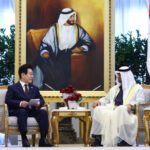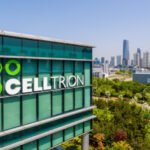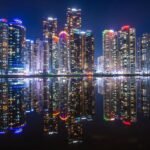
South Korea’s medical tourism industry is enjoying its strongest influx on record, propelled by surging demand from foreign patients drawn to the country’s reputation for high-quality care, competitive pricing and the cultural halo of K-beauty.
However, analysts warn that its rapid expansion is being driven overwhelmingly by cosmetic procedures and concentrated in Seoul, raising concerns about the sector’s long-term resilience.
According to a recent report issued by Yanolja Research, 1.17 million foreign medical tourists visited Korea last year – the highest number since the sector was institutionalized in 2009 and more than double the pre-pandemic peak of 497,000 in 2019.
The milestone suggests that Korea is evolving from a peripheral player into a meaningful global supplier of medical and wellness services, lifting the industry’s ambitions for international market share.

STRUCTURAL TRENDS
Much of the growth reflects structural trends in advanced economies, where aging populations, chronic diseases and rising healthcare costs are fueling demand for better services abroad, according to Yanolja researchers.
Data showed that foreign patients visiting Korea last year for treatment or health check-ups spent an average of $2,408 per person – almost twice that of general tourists, who spent $1,372 on average.
With medical visitors typically spending more and staying longer, policymakers increasingly view the segment as a driver of higher-value tourism and quality-based growth, analysts said.
Satisfaction metrics reinforce that trajectory.

About 38.6% of medical tourists have visited Korea four times or more, and “previous travel experiences” were cited as the top trigger for choosing Korea again – an indication that medical visits are evolving into longer-term, relationship-driven forms of tourism.
“Korea is emerging as a global hub for medical tourism, successfully absorbing demand through world-class clinical capability, competitive pricing and the global fandom around K-culture,” said Lee Kwan-young, associate researcher at Yanolja Research.
SEOUL-CENTRIC, BEAUTY-HEAVY
Yet the industry’s breakneck expansion has exposed persistent structural imbalances.

Last year, 85.4% of all foreign patients were treated in Seoul, while 77.3% of total medical spending was concentrated in dermatology and plastic surgery, according to Yanolja Research.
Analysts described this as a vulnerability: a tourism model anchored in “image-driven, desire-based” demand rather than the more resilient “need-based” demand that stems from essential medical conditions.
The contrast is most striking in serious-illness categories.
While global cancer incidence continues to rise, Korea hosted just 7,147 foreign cancer patients in 2024, well below the level seen before the outbreak of the COVID-19 pandemic. In 2019, some 11,000 cancer patients visited Korea for treatment.

By comparison, dermatology cases rocketed to 705,000 in 2024 from 85,000 in 2019, posting a 728% surge.
Yanolja Research noted that while Korea has cracked the “desire-driven” market centered on K-beauty and cosmetic improvement, it is losing ground in the “need-driven” segment – patients travelling for lifesaving or essential treatment.
CURRENT SUCCESS OF K-BEAUTY REPRESENTS HALF THE OPPORTUNITY
Service quality gaps are also emerging as a structural challenge.
While trust in Korean medical technology was high, satisfaction levels for ease of use, foreign-patient service infrastructure and post-treatment care were rated near the bottom, revealing a gap between expectations and the practical experience of overseas patients, according to the research report.

“The current success of K-beauty represents only half the opportunity,” said SooCheong Shawn Jang, professor of the White Lodging-JW Marriott School of Hospitality and Tourism Management at Purdue University. “Korea could be missing out on the enormous market for essential medical demand in advanced economies.”
Jang, who also heads Yanolja Research, said that Korea must convert cosmetic-driven inflows into more complex medical services such as cancer care and comprehensive health screenings, and eventually extend into recovery-focused tourism products linked with wellness assets across Korea.
“That is the key to longer stays and wider distribution of tourism spending (in Korea),” he said.
NARROWING WINDOW OF OPPORTUNITY
For now, momentum remains strong.

But academics and industry leaders warn that the window of opportunity may be narrower and the time could be shorter than the numbers suggest.
“The golden time created by K-culture will not last forever,” said Choi Kyu-wan, professor at Kyung Hee University’s College of Hotel & Tourism Management.
To promote medical tourism as a sustainable growth engine, he said, Korea must undertake regulatory reform and invest boldly in infrastructure to build a more balanced and resilient system.
Without such changes, experts caution, the sector risks becoming a victim of its own success – trapped in a narrow, Seoul-centric and beauty-dominated model just as global competition intensifies.















